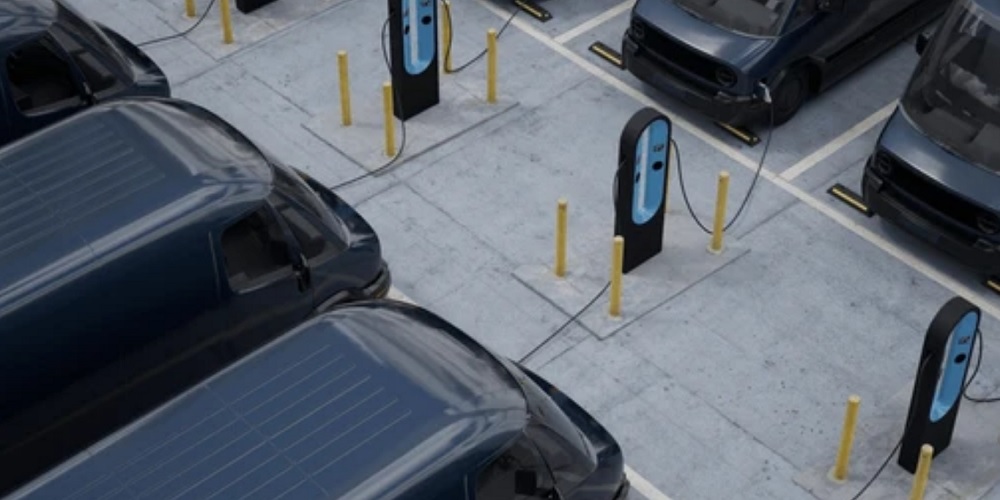Green initiatives: Challenges of running an eco-friendly fleet in government

When talking about government fleets and their impact on the environment, three specific statistics stand out:
- 28% of U.S. greenhouse gas emissions are from transportation.
- 65% of Americans want companies to move toward sustainability and reduce carbon emissions.
- 58% of people surveyed say that elected officials aren't doing enough to address climate change.
As growing public support and pressure push green initiatives to the forefront, government agencies are taking notice. As an entity, the government is the largest single energy consumer in the country. So, moving to an eco-friendly fleet can make a significant difference in greenhouse gas emissions, meet public concerns, and comply with evolving environmental regulations.
Challenges of green initiatives for fleets
There are various challenges involved in procuring and managing eco-friendly fleets that government agencies will have to take into consideration.
Higher initial costs
While purchase costs are starting to come down, electric vehicles (EVs) still command higher price tags than traditional gas or diesel vehicles. Kelley Blue Book reports that the average price of an EV is $61,448 compared to $49,507 for a gasoline-powered vehicle. Costs can often sometimes be offset due to state and federal incentives.
There are also savings in operations. The Department of Energy estimates that it costs 6.1 cents per mile driven by light-duty EVs compared to 10.1 cents per mile driven by an internal combustion engine vehicle.
Availability of charging structures
While it seems like there’s a gas station just about anywhere you might need one, there are still only about 51,000 charging stations nationwide. For governments, that may mean taking on the expense of installing and operating their own charging stations.
Agencies will also need to limit geographical areas or plan routes and miles carefully to ensure that vehicles have enough charge to last the day.
Maintenance
The auto industry is already facing a significant shortage of EV mechanics. According to the Institute of the Motor Industry, there won’t be enough qualified technicians to work on EVs until 2029.
Government entities will have to invest in tools and upskilling maintenance teams to handle the different types of technology.
Procurement
Finding the right vehicle for the job and procuring large fleets is a challenge these days, regardless of the type of vehicle that you want. Automakers built 4 million fewer cars last year due to supply chain problems, and manufacturing is still being scaled back in 2023. However, chip shortages and supply chain concerns are easing slightly. Still, procuring a large fleet of EVs or hybrid vehicles remains difficult.
The procurement process can be time consuming and often cumbersome. Typical programs emphasize the most cost-efficient solutions, so policies may need to be adapted to place greater weight on eco-friendly solutions to offset pricing policies and rewrite criteria for eco-friendly purchases.
Government entities may also face difficulty in getting budgets approved at higher amounts due to budget constraints or limited funds allocated specifically for green initiatives.
Transition planning
Nearly a quarter of fleet managers say that they have a knowledge gap when it comes to electric fleet vehicles. It will take additional training and learning to create an effective transition plan.
Government agencies will need to put this type of plan in place to guide purchases. For example, are you looking to replace your entire fleet all at once, or do you want to move to hybrid vehicles first, add to your fleet, or replace vehicles with EVs as your fleet ages out?
Moving to EVs may also require rethinking operations. Since the distance that EVs can travel on a single charge is limited, route planning and utilization become even more critical to ensure that vehicles have enough power to do their job.
While you would ideally schedule usage to allow for a full day’s work and charging overnight at a hub facility, fleet managers will also have to build time for charging off-site. Level 3 charging stations, such as those typically deployed in public charging infrastructure, can charge an EV in about thirty minutes or so. Lower-level chargers can take up to fifteen hours.
How Sourcewell can streamline eco-friendly fleet procurement
Sourcewell enables cooperative purchasing for fleets for government agencies to accelerate procurement while reducing costs. Cooperative agreements leverage the power of 50,000 participating agencies and nonprofit organizations for bulk purchasing power. Sourcewell has various solicited and ready-to-use contracts for EVs and accessories. Each contract is competitively sourced and awarded to meet compliance.
You can save time and money by transitioning to an eco-friendly fleet. To help you with the process, download this Public Fleet Electrification Guide. You will learn:
- The current state of EVs, including definitions and capabilities
- How to overcome real and perceived challenges to fleet initiatives
- The data, calculators, and other resources that can help you make more informed decisions
As more government agencies transition to green initiatives for fleet vehicles, Sourcewell can ease the process while adhering to procurement and competitive sourcing rules.
See how easy it is to smoothly adhere to any greening initiatives using Sourcewell’s cooperative purchasing program. Streamline the process by choosing from hundreds of suppliers already on contract. Sourcewell’s procurement experts competitively solicit and award contracts on behalf of 50,000 participating agencies in North America. Check out our contracts here.

